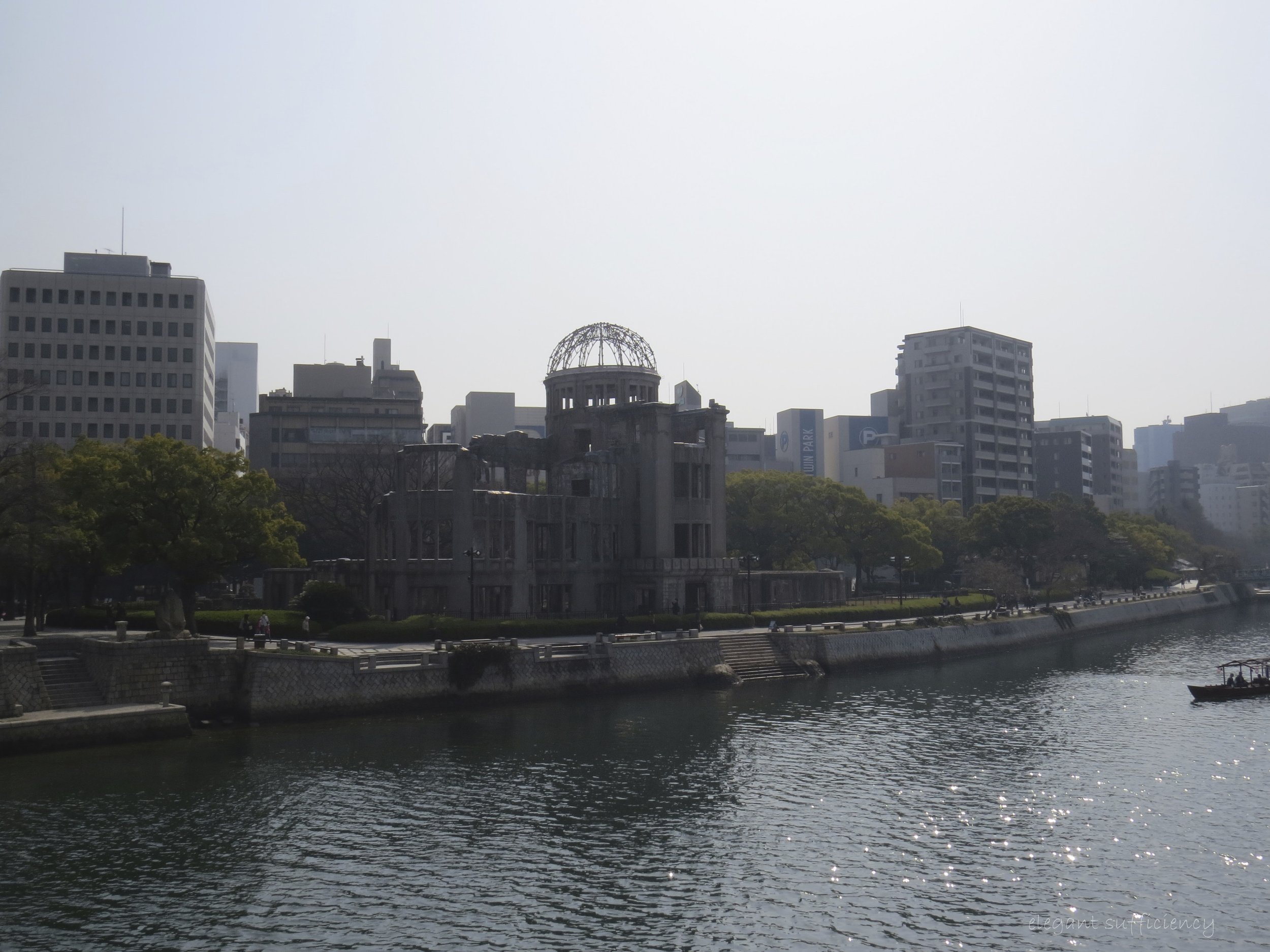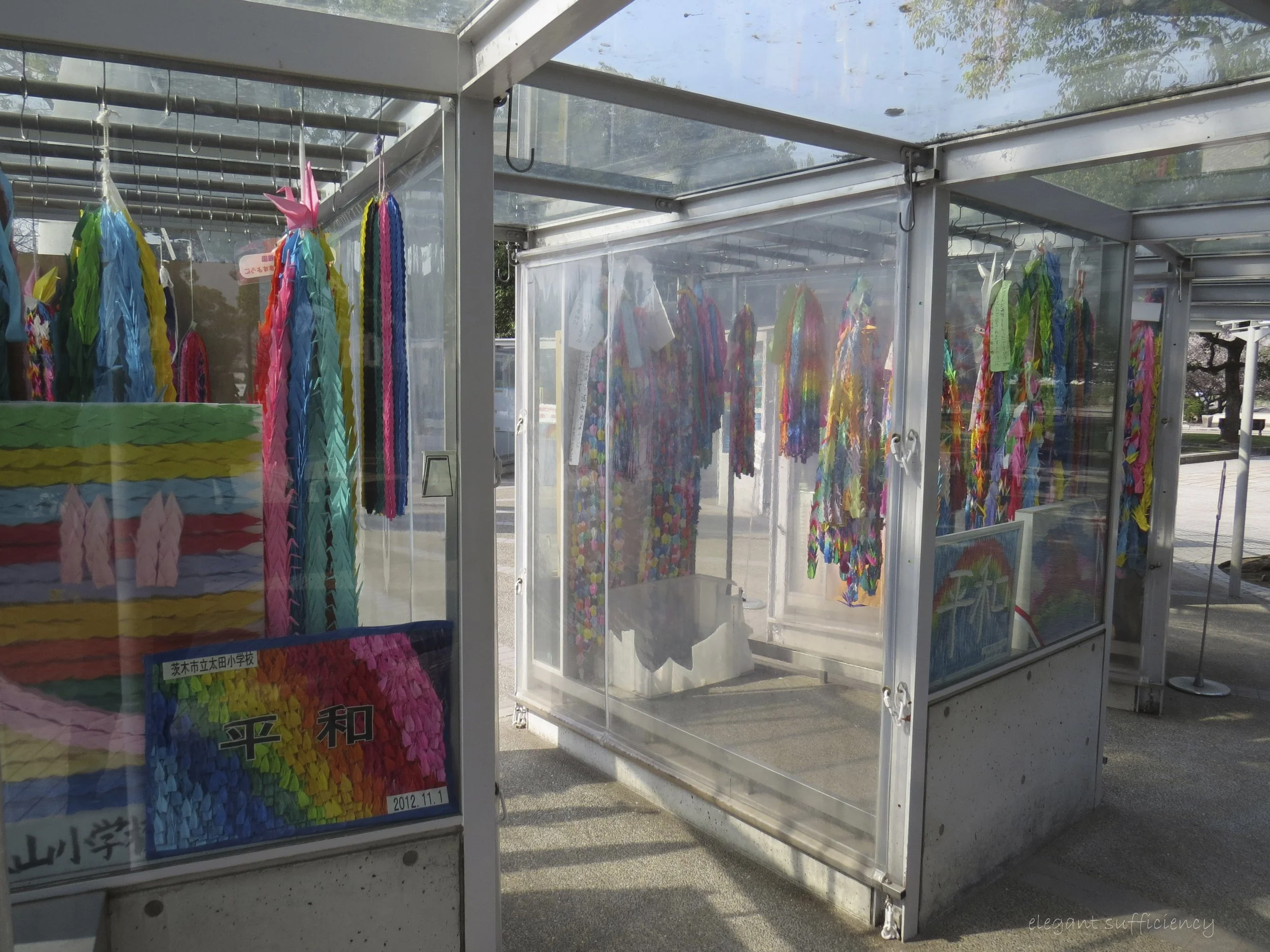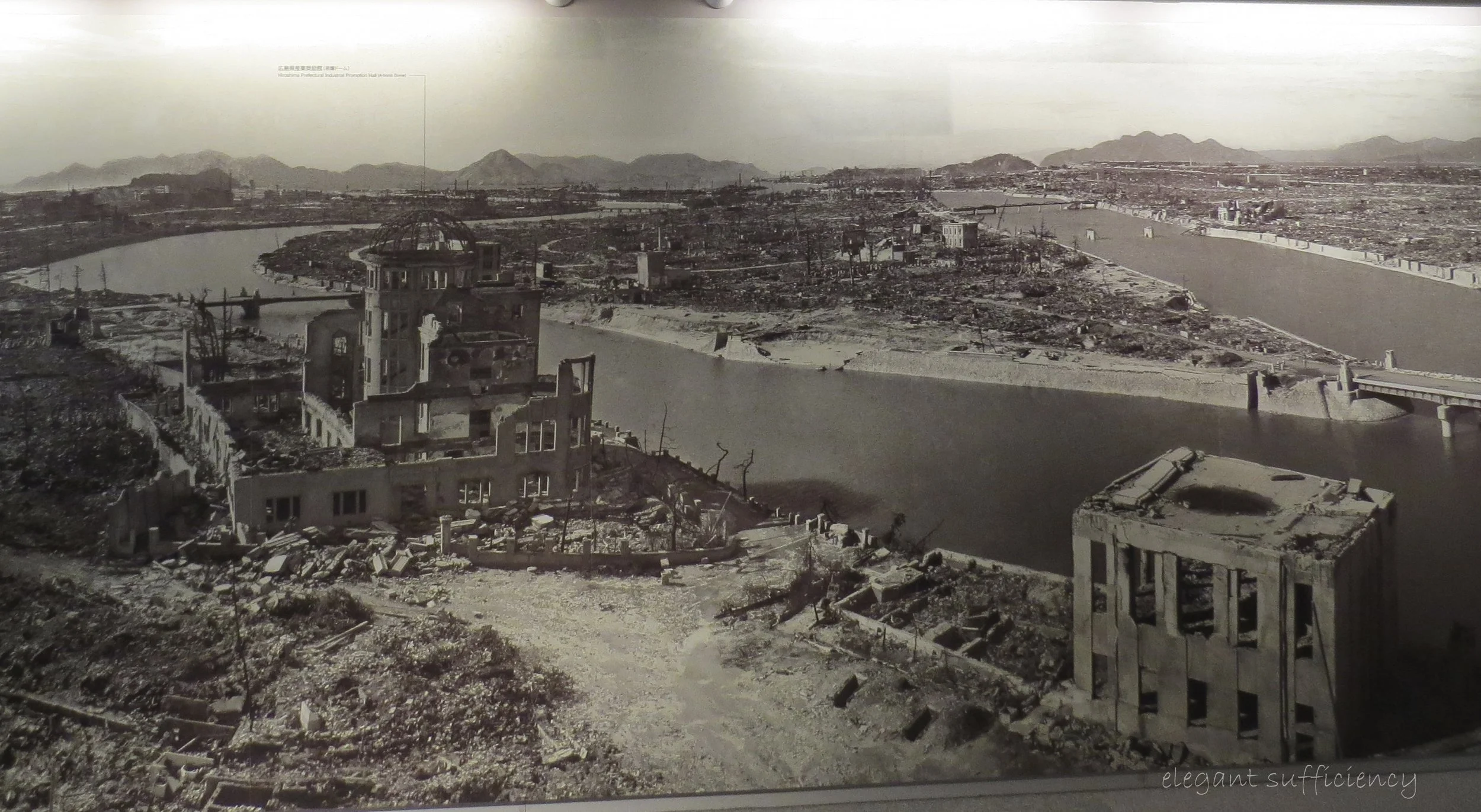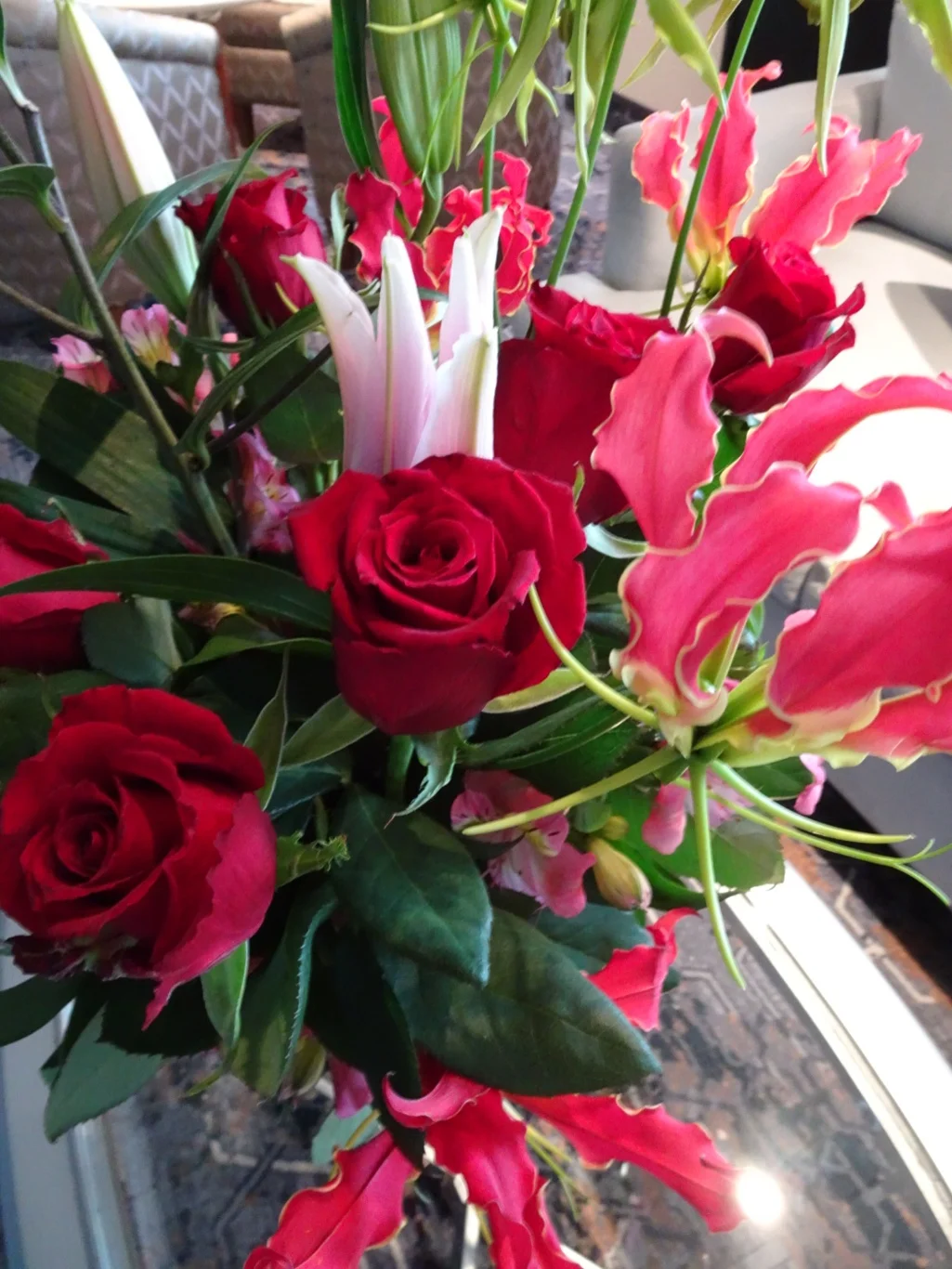The Peace Park
We opened the curtains to find Hiroshima outside this morning. We had an early start, because the immigration officials were starting work at 7am and we needed to present ourselves in person with our passport when called. So, we settled at a table and no sooner started breakfast than heard our details called. Off we went, leaving a half finished breakfast behind with every intention of finishing it. Oh my, what a task our friends had convincing everyone that yes, we were coming back and no, please don’t take it away! (Except that, of course, when we resumed our breakfast, they quietly substituted almost everything with an identical plate of fresh food…such incredible service)
So, what did I know about Hiroshima, apart from the obvious? Well, not a lot, actually. This was new ground for us and we were eager to see what there is to see here – and yet, I was a little wary. After all, visiting places such as this is not something to take lightly and although I wanted to come here, felt I ought to visit and learn about the events referred to here as “the devastation”, nevertheless a small part of me wanted to stay in the garden with the blossom and green trees.
The drive was through a place like any other Japanese city, though. People cycling along, cute little signs for crossing places and wires everywhere.
Outside the little playgroup, the man was making a delivery in his small, positively cute little van. He was dressed in overalls and wore a face mask, maybe because of an allergy to the pollen which is rather high here right now. Or perhaps he had a cold and didn’t want to spread it around? Just inside the door is a shoe rack and everyone’s outdoor shoes are there, neatly placed and there’s a little cartoon character on the door welcoming visitors. All is the space of a normal domestic garage.
Along the road, three little girls hurry along behind their Mummy, running to a dance class maybe, or a party? So cute and pretty!
One feature of Hiroshima is the streetcar and these were creating a little traffic jam right there at the central crossroads. Our guide, Masa, said that his wife and daughter don’t have the patience to take this route because of them. We were to learn later that these streetcars were up and running again just three days after the bomb fell and as such, are a symbol of the recovery efforts.
We parked right opposite the dome and by the bridge where the bomb exploded 600m above the ground. Nearly everything within 2km of the centre was destroyed and thousands of lives were lost as a result.
Now, it’s a serene riverside scene and the sunshine and blue sky added to the sense of peace. We strolled around, following Masa, taking it all in and capturing the small details with our cameras.
The camellia hedge brightened the scene and brought colour into what could have been a bleak place.
And the street cleaners taking their break were a good reminder the life goes on as normal here. Though the place itself is a tribute to the devastation, it’s neither gloomy nor maudlin, but respectful and enlightening, rather.
The dome and the structure beneath is is in constant repair to maintain it exactly as it is for the future. Small cracks are filled with polymers to prevent it crumbling away.
One symbol is everywhere – the origami cranes.
These were hung at the memorial to the Korean people who were working in Hiroshima at the time and also died as a result.
But the real paper crane centre was by the memorial to Sadako, the small girl who began the tradition of folding the cranes for peace.
It’s a serious business here and there was a whole procedure to follow when bringing large numbers of the origami figures to donate.
We’d just walked past the reflecting pool with the upturned hands and the burning flame, when we encountered some other visitors to the memorial.
These small children were visiting with their teachers, bringing armfuls of folded cranes to donate as their contribution to the campaign for peace. They were beautifully dressed in identical smocks, red caps and stood at their teachers instruction to bid us “konnichiwa” and “Good Morning”.
Into the Museum then, where there were graphic displays of the events themselves, the aftermath and the hope for the future. Here is the wall size photograph of the devastation.
I’ll admit, I found some parts hard to read, so moving were they.
I lingered in some places, moved quickly through others. Particularly the human stories make for difficult reading.
There were plenty of these cheerful and very well spoken volunteers around to answer questions and clarify information in the clearest of English. They had up to date information about nuclear weaponry and statistics and were keen to share it.
The exhibit about Sadako was touching, if a little sentimental, understandably and by the time I reached it the little schoolgroup were there. I imagine they hear all about Sadako and her battle with leukaemia when they are folding the cranes.
Last of all was a short corridor of desks. Desks where one might sign a petition against nuclear weapons. Desks where one could read the Peace Declaration dated August 2012, issued as a result of the tsunami and resultant nuclear power plant accident. Finally, a desk to complete a feedback form, which with typical Japanese modesty offers merely “satisfactory” as the highest grade.
We completed what we felt we had to complete, in my case offering the highest grade throughout. It had been a very thoughtprovoking visit and I am very pleased indeed that I have had the chance to come here.
On to the garden…in the next post.


































